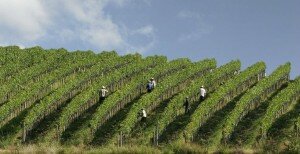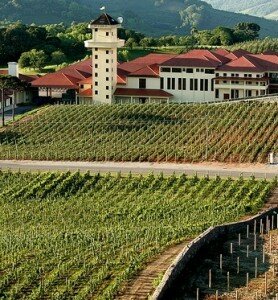Whilst at Vinexpo this year there was much talk of Brazil having the potential to become a major  consumer of wine. Wine Intelligence have some good reports on the Brazilian wine market as does Mike Veseth over at The Wine Economist.
consumer of wine. Wine Intelligence have some good reports on the Brazilian wine market as does Mike Veseth over at The Wine Economist.
Brazil has a population of around 200 million and its economy is the world’s seventh largest economy by nominal GDP and the eighth largest by purchasing power parity. Brazil is also one of the world’s fastest growing major economies.
However in the wine world Brazil is just beginning. Just how quickly Brazil takes its first footsteps into being a major consumer of wine remains to be seen.
Brazil is the third most important wine producer in South America although the average national wine consumption is still extremely low at 2 litres a year.
Red wine makes up 80% of the market and imported wine is a fairly new phenomenon and locally produced wines include those made from non Vitis vinifera vines.
Wine Intelligence found that “although country and region of origin are important buying cues, awareness and penetration of some of the world’s most prestigious wine producing areas is noticeably low.
For example, in Rio, only 47% of regular wine drinkers are aware of Bordeaux. And that was a high score: Champagne achieved a mere 35% awareness rating and Burgundy just 27%. Rioja scored even lower, with 18%.”
Brazil has a history of vine growing since 1532 when the Portuguese planted them in the state São Paulo (the Portuguese colonized Brazil in 1500).
Spanish Jesuits brought Spanish vines t o Rio Grande do Sul in 1626, and 18th century settlers from the Azores brought vine cuttings from Madeira and the Azores.
o Rio Grande do Sul in 1626, and 18th century settlers from the Azores brought vine cuttings from Madeira and the Azores.
By the late 1870s, wine making was more definitely established and Italian immigrants brought Italian varieties with them and did much of the vine-growing.
According to the Brazilian Agricultural Research Centre (EMBRAPA), Cabernet Sauvignon and Merlot varietals were the most common varietals for red wine production in 2008, accounting for 33% and 24% respectively.
Among white and rosé grape production, Moscato and Chardonnay are the most accepted types of grape in Brazil. In 2008, Moscato production reached approximately 15 million tons compared to 6 million ton of Chardonnay grapes.
However, as a result of the consumers’ openness to new trends, the consumption of other wine types – such as Malbec, Sauvignon Blanc and Riesling – continues to increase.
Winesearcher lists Brazilian wines made with the following grapes: Alicante Bouschet, Ancellotta (a red wine grape used as a blending ingredient in Lambrusco), Pinot Noir, Egiodola (a red variety from the Basque region, often used for rosé), Tannat, Prosecco.
grape used as a blending ingredient in Lambrusco), Pinot Noir, Egiodola (a red variety from the Basque region, often used for rosé), Tannat, Prosecco.
EMBRAPA lists the following grapes as being used in the Rio Grande do Sul state: Trebbiano Colombard and Pinotage.
The share of Brazilian wines is still small when compared to the share of imported wines in Brazil. Imported wines are the most preferred by Brazilian consumers. In 2005, imported wines made up 60.15% of total wines commercialized, growing to almost 71% in 2009.
Wine Intelligence also reports that sparkling wine is becoming more popular as data collected for the Brazil Wine Market Landscape Report shows three quarters of drinkers of imported wine in Brazil are now drinking sparkling wine at least several times a year , placing bubbles just above rosé in the hearts of Brazilian consumers.
 Vinexpo announced that Brazilian wines had a favourable outlook of increasing their exports by 90% over 2011.
Vinexpo announced that Brazilian wines had a favourable outlook of increasing their exports by 90% over 2011.
The Brazilian wine industry has stepped up its publicity and taken a leap forward in sales to strategic international markets, as well as winning an increasing number of international awards; gaining recognition from some of the world’s foremost specialists; and the inclusion of Brazilian labels in some of the most renowned restaurants in the world.
According to IBRAVIN [the Brazilian Wine Institute] exports of bottled wine from Brazil grew by 144% over the first quarter of this year compared to the same period in 2010.
Photo Credits

